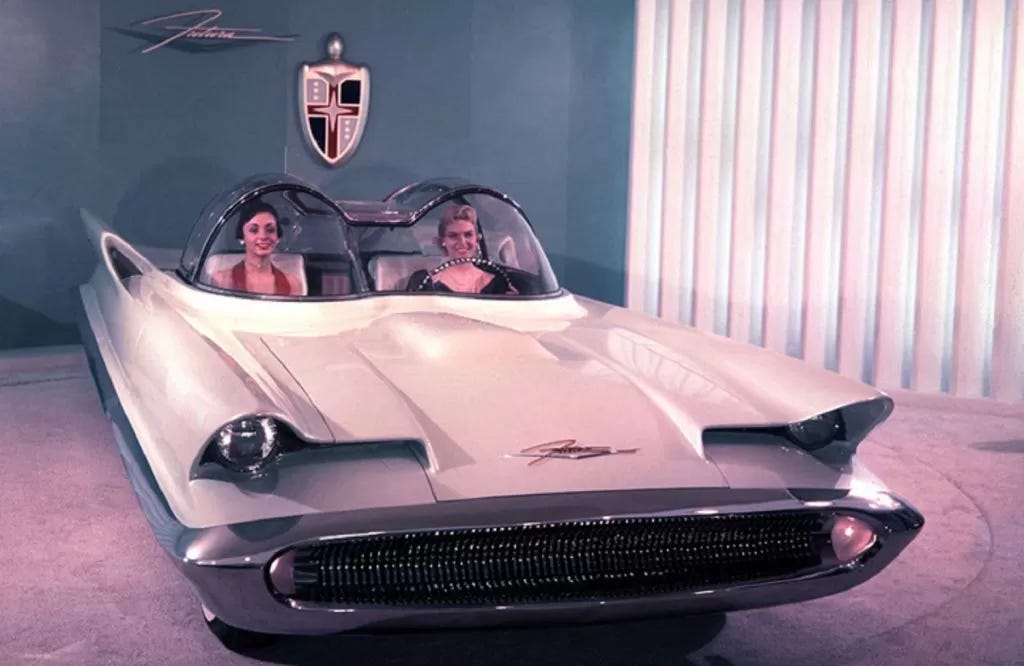Hybrid vigor
Political and media attention is on electric cars – while hybrids race away with the market
Please tap the {{heart}} button, which helps new readers find All Predictions Wrong.
Since the Tesla Model S went on sale in 2012, electric cars have dominated auto politics, auto manufacturers’ capital planning and the pages of “buff books” such as Motor Trend.
California and the New England states enacted rules to favor electric cars (and electric trucks and buses). Detroit automakers under the first Trump Administration opposed the mandates. Joe Biden was elected: Detroit turned on a dime (the turning radius of automaker politics is better than a lot of SUVs) and favored EVs, making lavish promises about an electric future. Biden issued various mandates to compel the public to purchase electric vehicles. (And yes they were mandates, despite weasel-wording.)
As Trump was returning to the Oval Office, enthusiasm for EVs – measured by sales -- declined. Automakers and rental car fleets began to retract their promises. (More on that later.) Elon Musk changed from hippy visionary to bane of Chablis liberalism. Trump ripped up many Biden orders regarding EVs, while pressuring California to back down.
While this bruhaha was happening – the hybrid quietly took over the automobile vanguard.
Hybrids get terrific gas mileage compared to conventional vehicles. They emit notably lower greenhouse gases per mile traveled. Environmentally they are the cat’s meow. They are good for energy policy -- there’s already enough of them on the road that somewhat lower gasoline demand has moderated pump prices.
Yet they don’t require a trillion-dollar investment in charging-station infrastructure. They use gasoline via existing infrastructure, just less of it. They don’t have impractical range limits and charging requirements – if you want to drive from Chicago to Atlanta, jump in your hybrid and go. They start in winter. They don’t die in cold weather.
Hybrids are in many respects the perfect next step in transportation – efficient, flexible, lower environmental impact yet delivering the freedom most buyers want from cars.
And they weren’t developed by government mandates! Engineers figured out how to do them, and buyers responded.
The 1955 Lincoln Futura advanced concept car. Later its chassis was refinished as TV’s Batmobile. Photo courtesy Ford Motors.
Last year in the United States, 1.3 million all-electric cars were sold – as 1.9 million hybrids left showrooms. That meant 12 percent of new vehicles sold in the United States were hybrids, a higher market share than ever achieved by EVs – even though EVs received a direct-to-consumer taxpayer subsidy of $7,500 per unit. (A small share of hybrids also receive this subsidy — most don’t.)
The hybrid is a huge success story, embraced by buyers as a good compromise between lower petroleum use and getting what you want from a car.
But to hear Washington, Sacramento and the Manhattan media talk, it’s as if hybrids don’t exist.
Most political powerbrokers and New York City editors have no idea what’s in contemporary showrooms – they take Uber or are driven everywhere in SUVs just magically awaiting them. They’re still focused on disputes about mandating or banning EVs, even as the market rapidly moves toward hybrids.
Of course, Washington and New York City are always the last to know.
Keep reading with a 7-day free trial
Subscribe to All Predictions Wrong to keep reading this post and get 7 days of free access to the full post archives.




